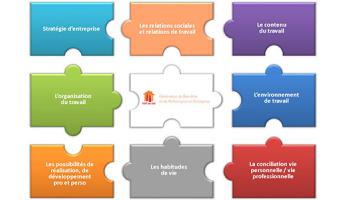Goal to follow monitor improve manage actions on RSI
- Evaluate RSI factors for occupational injuries and causes (e.g cumulative trauma rather than a single event)
- Identify precisely: biomechanical, organizational and environmental, and lifestyle habits may cause occupational injuries
- Measure evolutions of RSI over time.
- Key Performance Indicator (KPI) provides understandable resources for efficient risk management and more adapted ergonomic intervention
- History of KPI and trends.
A real tool for sustainably managing prevention, the RSI KPI makes it possible to highlight issues specific to the company through regular expression of employees in an anonymous and confidential evaluation.
The system used for the diffusion of this RSI KPI makes it possible to adapt to all the digital supports (tablet, smartphone ...)
Ideally, the RSI KPI should be completed every three months to provide you with general trends and more specific sector indications.
Method
1. Approach
- Presentation of the methodology
- Use TOIT de SOI iterative & improve methodology : Retrieve - Rework – Report – Recommend – Retrieve
- Act in working group
2. Timeframe
- Quarterly on site Evaluation & Data Analysis
- General Report, on Q2 + Q4, presents KPI, resources, trends and changes
- Descriptive Analysis Report, on Q1 + Q3, presents KPI and resourcesEach Report is dedicated to the company specificities and provide improvement plan and recommendation
- Annual return to all attendees : employees and participants. (to determine)





